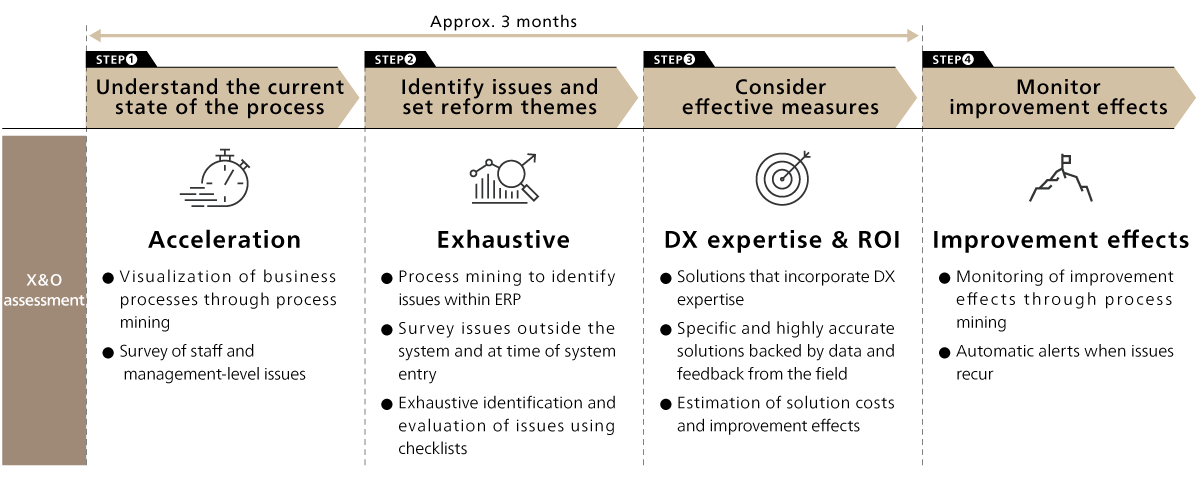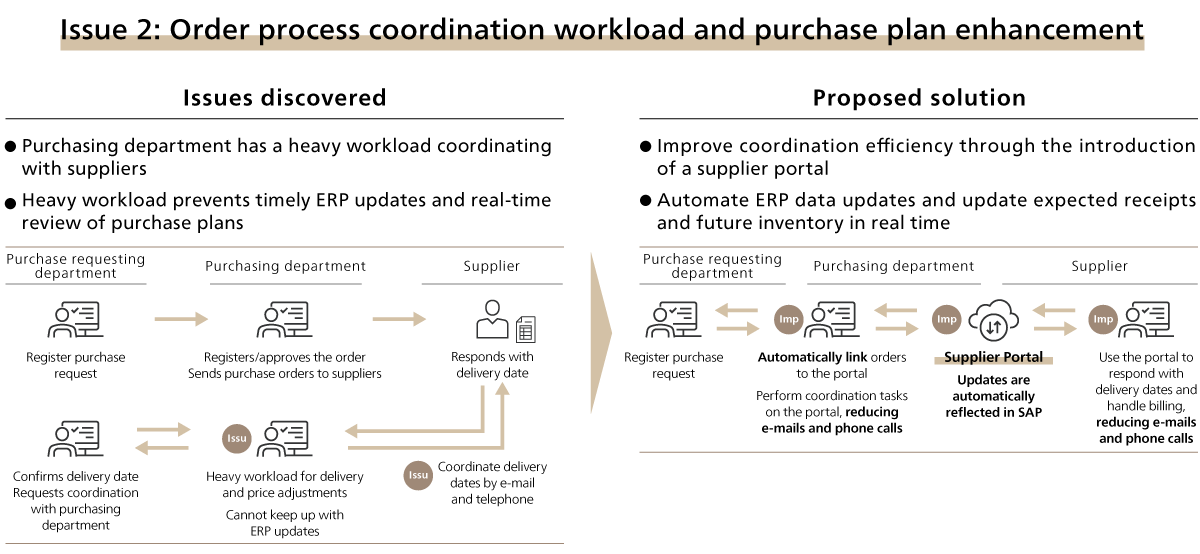TOSTEM THAI CO., LTD.: Data-driven issue assessment through process mining and surveys
By combining process mining of ERP data and employee surveys, end-to-end business processes and experience knowledge from the front line to the management level can be visualized simultaneously to quickly identify issues and formulate solutions

Client Profile
| Client name | TOSTEM THAI CO., LTD. |
| Location | 60/2 Soi Navanakorn 11, Navanakorn Zone2 Moo19, Phaholyothin Road, Klongnueng, Klongluang, Phathumthani 12120 |
| Established | 1987 |
| Business Activities | Manufacturing and sales of the following aluminum products:
|
| Capital | 2,767,000,000 THB |
Project Overview
Client issues
- Finding issues through interviews is time-consuming and labor-intensive
- Difficult to identify transformation theme for the entire process
- Unable to make decisions due to inability to estimate improvement effects
Solutions and findings
- Process mining to identify issues from business data
- Employee surveys to identify issues based on the experience of frontline workers and managers
- Creation of a transformation roadmap and estimation of improvement effects
Outcomes and effect
- Identified 44 themes, including automation, inefficiencies, and delays
- Created a transformation roadmap and estimated the effects of improvements over a five-year period
- Confirmed that process mining can also be used as a tool to strengthen internal controls
Featured Points
Difficulties of Client Issues
Inability to exhaustively identify issues across complex business processes
Tostem Thailand, which manufactures a wide range of high-quality products to meet customer needs, from aluminum building materials such as doors and window sashes to aluminum materials for industrial use, has undertaken a number of business reforms. Until now, the primary method had been to identify issues based on interviews with those in charge. The trouble with this approach was that it was time-consuming and labor-intensive, and it was difficult to exhaustively identify issues from complex business processes, which became a barrier to reforming the entire process across departments. Therefore, it was necessary to speed up the cycle of exhaustive issue identification and improvement in order to accelerate DX.

Critical success factors for the project
Quick identification of issues and formulation of solutions using X&O assessment
An X&O assessment, which combines process mining and surveys, was used to quickly identify issues and formulate solutions. Process mining was employed to visualize business processes from the data (O Data: Operational Data) stored in ERP and identify inefficient processes, room for automation, deviations from ideal processes, and other issues. Employee surveys were conducted to visualize experience knowledge (X Data : eXperience Data) from the front line to the management level and identify issues occurring both inside and outside the system. By combining the two, issues occurring both inside and outside the system were exhaustively and quantitatively identified, and solutions incorporating ABeam Consulting’s DX expertise were proposed for issues that are expected to have significant improvement effects. Decision-making support was provided by calculating cost-effectiveness.

ABeam's contribution
Identified 44 issues, developed a transformation roadmap, and estimated its effects in just three months
The project, which lasted approximately three months, identified 44 issues covering the sales and purchasing processes. We developed solutions and a long-term transformation roadmap for key issues among them, and estimated the return on investment over a five-year period.
In addition, we confirmed that the system can be used to improve the efficiency of internal audit work by monitoring division of duties, malpractice, and operational procedures.
[Key issues that we contributed to solving (1): Order changes and cancellations]
We discovered that many changes and cancellations were occurring in the order process. In particular, we found that processes with price changes had a 5-day longer lead time before shipment, lowering overall process efficiency.
![[Key issues that we contributed to solving (1): Order changes and cancellations] [Key issues that we contributed to solving (1): Order changes and cancellations]](/vn/sites/default/files/field/field_images/2022-10/process_case03-fig03_ENG.png)
[Key issues that we contributed to solving (2): Order coordination workload and enhancement of order planning]
In ordering raw materials, we found that the workload for coordinating delivery dates and prices with suppliers was high. In addition, we also found that future inventory could not be grasped in real time because adjustments were made outside of the system, and thus could not be used for future order planning.




